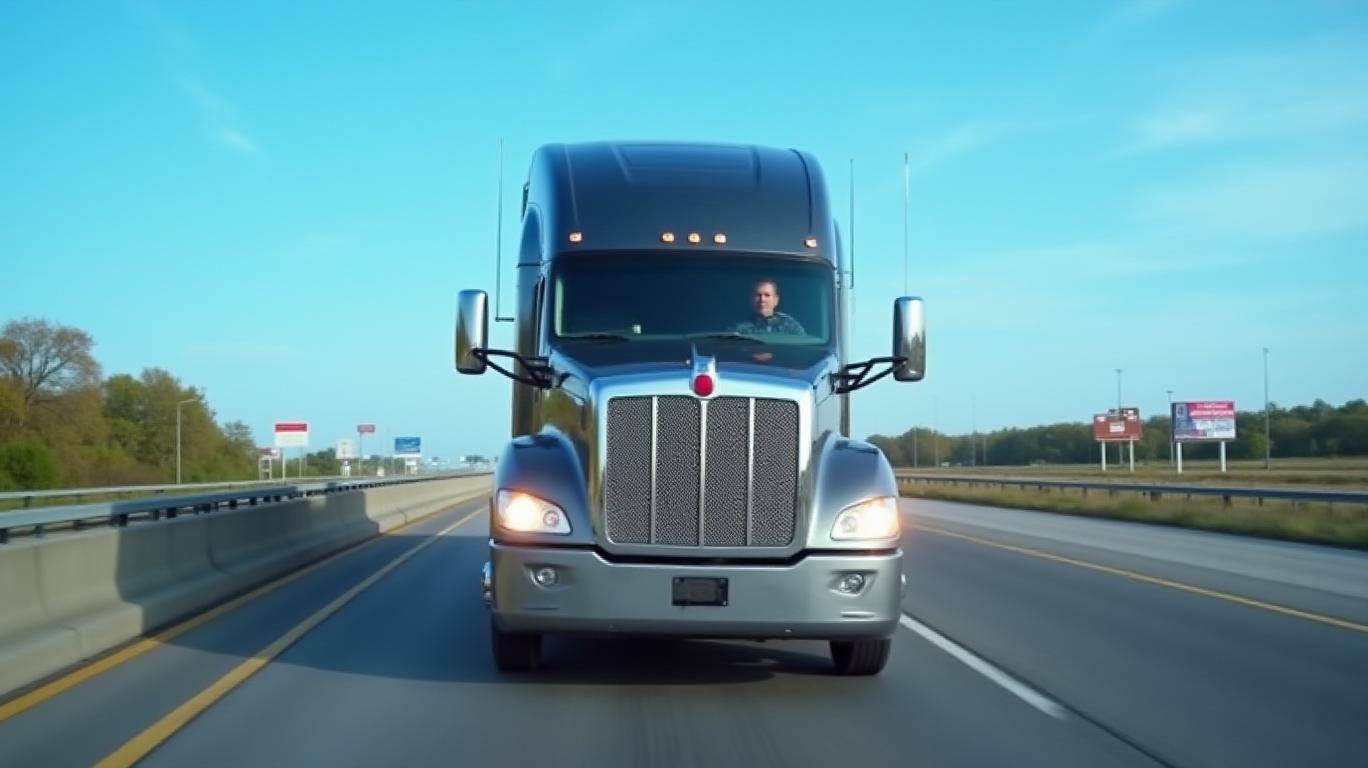PACCAR Navigates Challenges with Resilience in Q1 2025
PACCAR Inc (NASDAQ: PCAR) delivered a mixed but strategically instructive set of results for Q1 2025, balancing operational strength with external headwinds. While net income fell sharply due to a one-time litigation charge, the company’s core business and long-term investments suggest resilience and positioning for future growth.

The Financial Picture: A Litigation-Driven Dip Masks Operational Grit
PACCAR’s Q1 net income dropped to $505.1 million, a stark contrast to $1.195 billion in Q1 2024. The primary culprit was a $264.5 million after-tax charge tied to unresolved European litigation. However, adjusted net income (excluding this charge) surged to $769.6 million, a 14% rise over the prior year. This underscores strong operational performance, driven by robust demand in aftermarket parts and strategic investments.
Revenue hit $7.44 billion, narrowly exceeding estimates but down from $8.74 billion a year earlier. GAAP EPS fell to $0.96, while adjusted EPS of $1.46 narrowly missed analyst expectations of $1.61. The gap highlights the drag of external factors, but cash flow from operations remained solid at $910.3 million, reflecting PACCAR’s cash-generative model.
The Parts Division: A Pillar of Profitability
The PACCAR Parts Division delivered record revenue of $1.69 billion, a 2% increase from 2024. Pretax income fell slightly to $426.5 million, but this segment remains vital to PACCAR’s cyclical resilience. Its expansion of parts distribution centers (PDCs) and logistics capabilities has fortified aftermarket services, a high-margin business that thrives even during truck sales downturns.
Geographic Performance: Challenges and Opportunities
- North America: A slowdown in Class 8 truck demand—projected at 235,000–265,000 units for 2025—reflects economic uncertainty and trade tensions. However, PACCAR’s premium models like the Peterbilt 579 and DAF’s aerodynamic trucks maintain strong margins.
- Europe: DAF’s focus on fuel-efficient trucks has positioned it well for the 270,000–300,000 unit truck market expected in 2025. The Warsaw used truck center by PACCAR Financial Services aims to capitalize on Central European demand.
- South America: DAF Brasil’s 10% market share in Brazil’s truck segment, alongside exports to Chile and Colombia, signals success in emerging markets. A 65,000-sq-ft expansion of its Ponta Grossa factory will boost engine production capacity.
Strategic Investments: Betting on the Future
PACCAR’s $172 million in Q1 capital expenditures and its $700–$800 million 2025 CapEx forecast reveal a focus on innovation:
- A $35 million engine remanufacturing plant in Columbus, Mississippi supports cost efficiency and sustainability.
- R&D spending rose to $115.4 million, with annual guidance of $450–$480 million, targeting next-gen powertrains, connected vehicles, and battery tech.
- The Amplify Cell Technologies joint venture—funded with $600–$900 million—aims to scale battery production, critical for PACCAR’s shift to electric vehicles.
Management’s Outlook: Pragmatic Optimism
CEO Preston Feight emphasized PACCAR’s commitment to innovation, noting that investments in technology and global expansion will drive long-term growth. CFO Harrie Schippers highlighted PACCAR’s $18.02 billion stockholders’ equity and A+/A1 credit ratings, underscoring financial discipline. Despite risks like litigation costs and North American market softness, the company’s $8.1 billion cash reserves provide a buffer for strategic moves.
Risks and Considerations
The unresolved European litigation remains a wildcard, with potential for further charges. Additionally, global economic uncertainty could prolong truck sales softness. However, PACCAR’s diversified geographic footprint and aftermarket dominance mitigate these risks.
Conclusion: A Company Building for Tomorrow’s Roads
PACCAR’s Q1 results reveal a company navigating short-term turbulence while doubling down on long-term opportunities. Despite the litigation-driven net income drop, adjusted figures and cash flow demonstrate operational health. The $769.6 million adjusted net income and $1.69 billion Parts Division revenue underscore the durability of its core business. Strategic investments—such as the $35M Mississippi plant and $600M+ battery venture—position PACCAR to lead in electrification, a $150 billion market by 2030 (per BloombergNEF).
PACCAR’s 5.6% dividend yield and tradition of returning ~50% of net income to shareholders further bolster its appeal. While 2025 earnings face headwinds, the company’s balance sheet strength ($8.1B cash), geographic diversification, and technological bets suggest it is well-equipped to capitalize on recovery cycles. For investors, PACCAR remains a compelling play on both near-term resilience and the long-awaited shift to electric commercial vehicles.

Comments
No comments yet